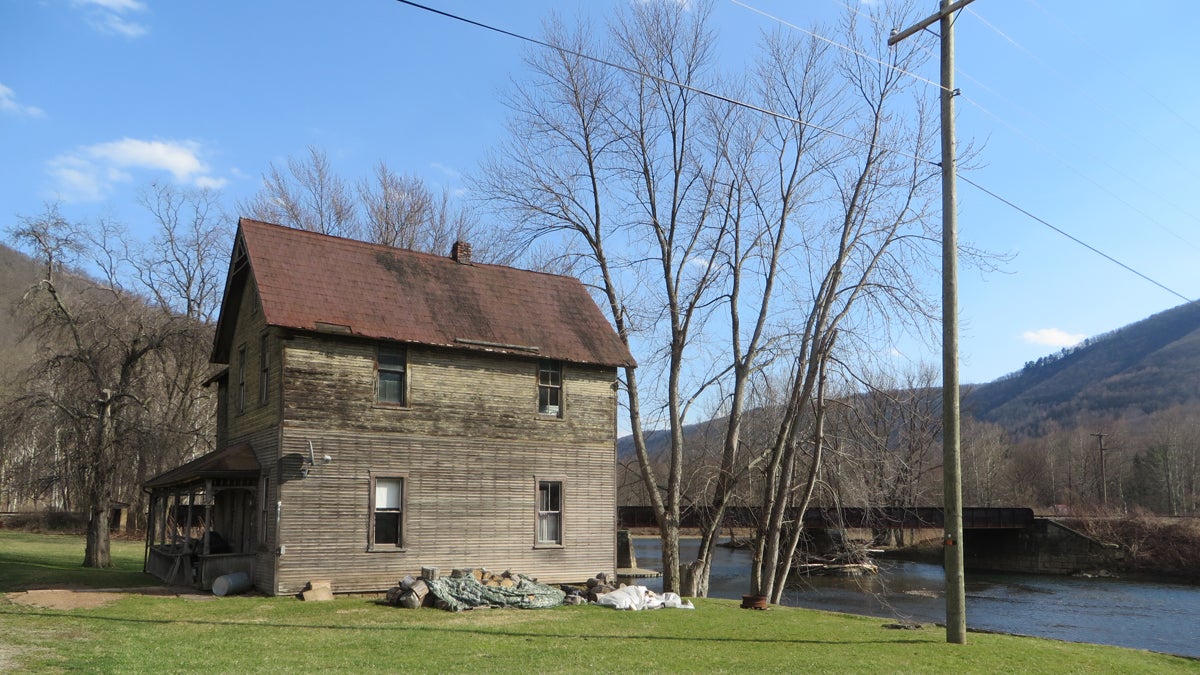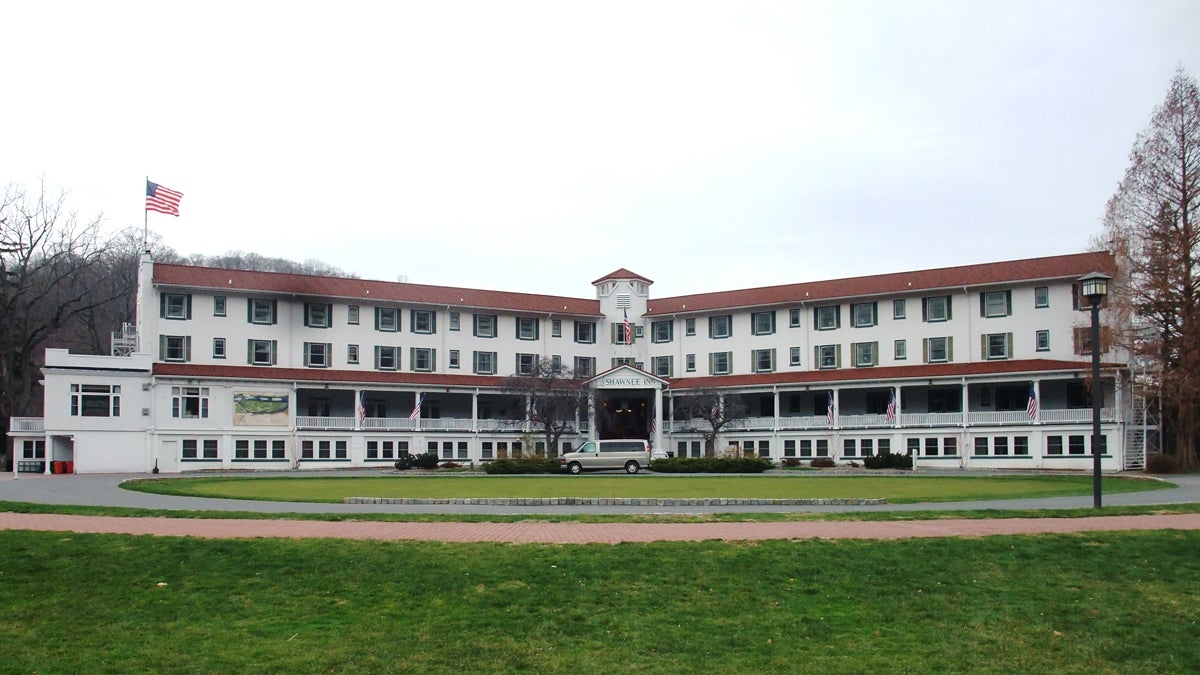Disaster planning for Pennsylvania’s historic resources

The Bedford Springs Hotel dates to 1806 and is one of many treasured historic resources in the Bedford County. (Image courtesy of the Disaster Planning for Historic Properties Initiative)
Pennsylvania may not be the wettest state in the nation, but it is one of the most flood-prone. And all those storms and rising waterways can mean disaster for irreplaceable historic resources found throughout the commonwealth.
Which is why preservationists and government planners are taking steps now to develop strategies that address the threat of natural disasters to historic buildings and landmarks. Philadelphia is the first major urban area to initiate a plan to protect its treasured sites, and three other counties — Bedford, Monroe and Cameron — are participating in pilot projects that will create or update their surveys of historic structures and develop protective measures in their hazard mitigation plans.
“Statewide, flooding is identified as the greatest natural threat to life and property,” said Jeremy Young, project manager for the Disaster Planning for Historic Properties Initiative at the Pennsylvania State Historic Preservation Office. The commonwealth is also among the top 10 states for the greatest number of damage payments from the national flood insurance program since 1978.
And now for the first time, Pennsylvania planners are prioritizing those historic resources, buildings and districts in flood plains that contribute so much to a community’s “local identity and sense of place,” Young explained.
In Sandy’s path
In selecting the places that would be part of the new initiative, the SHPO looked at the 18 counties that had suffered damage during Hurricane Sandy in 2012. The $1.5 million in funding for the program was provided by the National Park Service from the Hurricane Sandy Disaster Relief Fund.
Of the 18 counties, six were due to update their hazard mitigation plans for the Federal Emergency Management Agency in 2017. Invitations to participate were sent to the six counties, and four (Philadelphia, Bedford, Monroe and Cameron) expressed interest in the pilot program.
The first step for Bedford, Monroe and Cameron Counties involves conducting countywide surveys of historic buildings within their flood plains. “We are seeking to identify those resources that are currently on or potentially eligible for listing on the National Register of Historic Places, as well as other sites that the community may identify as local landmarks and should be included in the hazard mitigation plan,” Young said.
In the second phase, AECOM Technical Services, a consultant hired by the Pennsylvania Historical and Museum Commission, will inspect the buildings to determine elevation characteristics that make them vulnerable to flooding. “We want to understand how they flood, and plan accordingly,” Young said.
Then the SHPO will coordinate the formation of project steering committees consisting of local planners, architects, and professionals with experience in historic restoration and preservation to develop methods that protect the character of the buildings.
Washington slept here — and here
The last time a survey of historic sites was conducted in Bedford County, about 100 miles west of Harrisburg, was in the early 1980s. Its towns have many links to the shaping of the nation.
“Everyone likes to claim that ‘George Washington slept there.’ Well, he was here twice,” said Donald Schwartz, director of the County Planning Commission. “He was here during the French and Indian War, and he stayed in a building just a block from my office. And he was here again during the Whiskey Rebellion to help put that down. We have a lot of history here going back to colonial times.”
When Schwartz received the invitation from the SHPO to participate in the initiative aimed at protecting the county’s historic resources, he jumped at the opportunity. Bedford will hire its own consultant to work with AECOM on updating the historic building survey. The fieldwork is expected to start later this month (June). “This is a first for us, and it’s very exciting,” Schwartz said.
Nestled in the peaks of the Allegheny Mountains, the county has steep drops to the valley floors. Parts of downtown Bedford, the county seat, sit in the 100-year flood plain, and many of the older boroughs are situated along rivers and creeks. The area gets heavy snows and experiences strong snow-melt runoff during the spring. The remnants of hurricanes come up from the Carolinas, as well, and dump rains that cause severe flooding in many parts of the county. “And we got hit with the edge of Hurricane Sandy,” Schwartz said.
The rains and winds pose threats to many of the county’s historic homes and farmhouses from the 18th and 19th centuries. A major point of pride, the Bedford Springs Resort dates back to 1806; the curative powers of the local waters were used by Native Americans in the 1700s. Ten U.S. presidents have stayed there, and James Buchanan made it his summer White House.
“History is a major part of tourism in Bedford County,” Schwartz said.
“Hopefully this [study] will pinpoint any structures that are subject to hazard,” he said. “In the next phase, we’ll address ‘what can you do?'”
From ground zero
Cameron County, in north central Pennsylvania, is the second-smallest county in the state and the only one that has never conducted a survey of its historic resources. “There are no designated properties there,” said Young of the SHPO. “Our goal is to expand that county’s inventory of identified historic places. Hopefully, that will help expand their economy for heritage tourism.”

Cameron County has many historic homes and farmhouses, like this one in Driftwood Borough, but had never conducted a historic survey before. (Image courtesy of the Disaster Planning for Historic Properties Initiative)
Cliff Clark, director of the county Community and Economic Development Office, said the historic resources include a number of old churches, turn-of-the-century mansions, the former Sylvania Electronics plant and other industrial facilities in and around Emporium, the county seat.
A substantial amount of the county is located in flood plains, and many of the communities sit in narrow valleys, Clark said.
But while it’s small, the county has acted strategically in the past. When Emporium flooded in 1942, a levy system was constructed to protect the historic downtown. “We’ve had no town-wide flooding since then,” Clark said.
Still, the county embraced the offer from the state office to be part of the new initiative aimed at preserving historic buildings. The survey will begin in July in Cameron.
“This certainly complements our hazard mitigation plan. And a lot of other programs have processes that involve identifying historic properties and their locations. This will help develop a database of that information,” Clark said, and will help leverage funding for other projects in the future.
‘The fabric of our community’
Monroe County, located in the Poconos in northeastern Pennsylvania, is the furthest along in the SHPO disaster planning process. Monroe was among the counties that felt the effects of Hurricanes Irene and Sandy, and suffered back-to-back 100-year floods from 2004 to 2006.
The survey of Monroe’s historic resources was completed in March. It includes 23 buildings or sites that are eligible for listing on the National Register, and 2,000 buildings that are in the 100-year flood plain. “A large portion of Monroe’s economy is tourism-related, and heritage- and recreation-related,” Young said.
One of the county’s principal recreational and historical attractions is the Shawnee Inn, birthplace of the PGA and a golf mecca on the Delaware River since 1911. The first floor of the inn was inundated during the floods 10 years ago, and has since been completely refurbished. The Old Mill in Sciotta, which dates back to the 18th century, was also heavily damaged by that flooding.

The historic Shawnee Inn in Monroe County was heavily damaged by flooding 10 years ago, but has been completely refurbished. (Image courtesy of the Disaster Planning for Historic Properties Initiative)
“History is the fabric of our community – it makes us who we are,” said Maryellen Keegan, deputy director of the county Office of Emergency Management. “From our standpoint, we want to take every step we can to protect our buildings from man made and natural disasters. It brings in tourism, and it creates that identify for folks in our county.”
WHYY is your source for fact-based, in-depth journalism and information. As a nonprofit organization, we rely on financial support from readers like you. Please give today.


